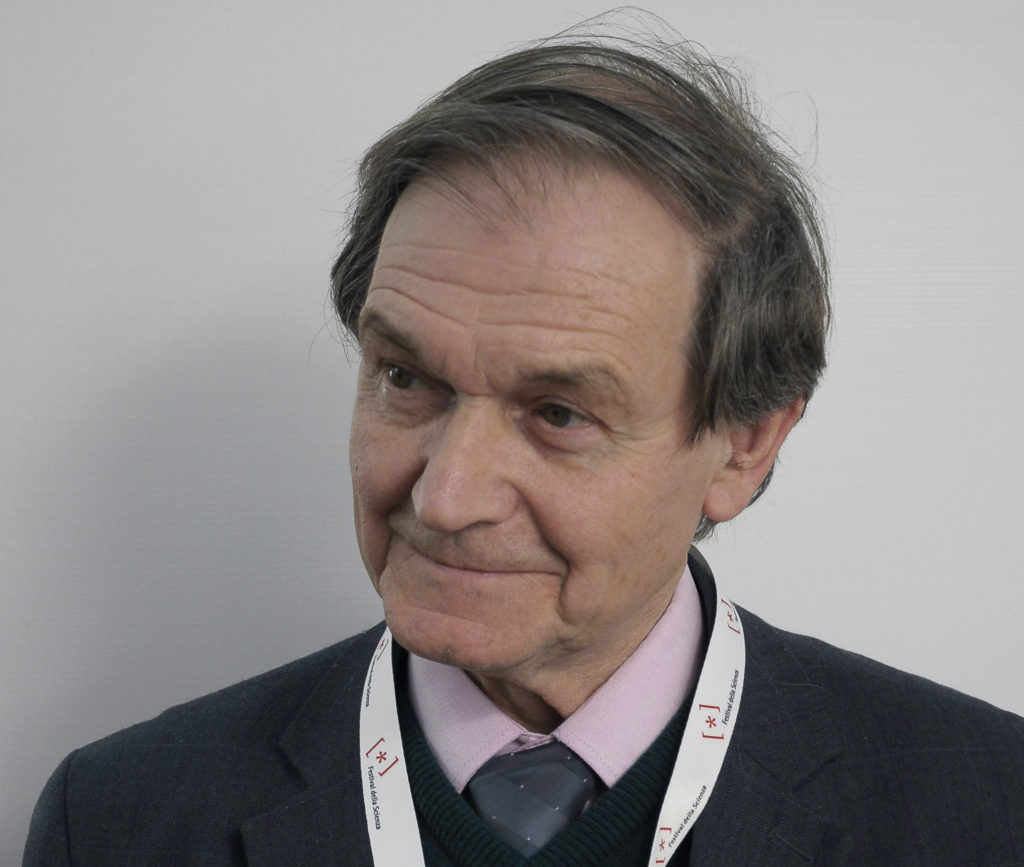
Penrose went to school in his hometown until the family, owing to World War II, moved to London (Ontario, Canada), before finally returning to London (England), where he completed his studies. The first university degree he obtained was at University College London, followed by a PhD at the University of Cambridge—initially under the supervision of Sir William Hodge, and finally, under John Todd. As a doctoral student, Penrose’s time in Cambridge coincided with that of Sir Michael Atiyah who, exactly as opposed to him, was initially supervised by John Todd, but went on to finally earn his doctoral thesis under the supervision of William Hodge. Penrose’s doctoral thesis, completed in 1958, was dedicated to the study of tensor methods in algebraic geometry. Even before finishing his thesis, Penrose was deeply interested in physics. This was greatly facilitated by his interactions with Dennis Sciama at Cambridge – a physicist friend of his brother Oliver, and who many years later would eventually be the PhD thesis supervisor of Stephen Hawking – as well as the courses he attended by Hermann Bondi (PhD thesis supervisor of Sciama), and Paul Dirac.
After completing his thesis, Penrose received a NATO research grant that allowed him to spend three years in the United States, first at Princeton, and later at Syracuse University. Upon his return to England in 1962–1963, he was an Associate Researcher at King’s College (London), before returning to the United States as an Associate Visiting Professor during the academic year 1963–1964, this time at the University of Texas in Austin. In 1964, he was appointed Reader at Birkbeck College (London), where two years later he would be promoted to Professor of Applied Mathematics. In 1973, he was appointed to the Rouse Ball Chair at the University of Oxford, where he went on to become Emeritus Rouse Ball Professor in 1998. His move to the University of Oxford once again coincided with the return there of Michael Atiyah, with whom he would initiate a long scientific interaction. In relation to this, Michael Atiyah would say:1
“When I was at Princeton at that time, before going back to Oxford, I talked with Freeman Dyson and we discussed Roger Penrose, and he said: `Oh! Roger Penrose did some very good things regarding black holes, which I have always admired, but he also did some very funny things with twistors. I didn’t understand them, so maybe, when you go to Oxford, you’ll understand what twistors are.’ And he was right, exactly right. That was the connecting link.”
During the period 1983–1987, Penrose juggled his position at Oxford with the Edgar Odell Lovett Professorship at Rice University, in Houston. Other positions occupied by Penrose at various times include being the Gresham Professor of Geometry at Gresham College, London and the Francis and Helen Pentz Distinguished Visiting Professor in Physics and Mathematics at Pennsylvania State University.
Roger Penrose has received several prestigious awards and honours, with the most recent one being the coveted 2020 Nobel Prize in Physics that he shared with physicists Reinhard Genzel and Andrea Ghez – a crowing moment in his long and distinguished scientific career.
Penrose is married to Vanessa Thomas, Director of Academic Development at Cokethorpe School (near Oxford), and formerly responsible for Mathematics at Abingdon School, and with whom he has a son. He has three other children from a previous marriage to Joan Isabel Wedge.
Personal recollections
My first encounter with Penrose took place in the academic year 1986–87 at Rice University (Houston), where I had begun my doctoral studies that very year under the supervision of Raymond Wells, working on a possible twistorial correspondence for the vortex equations of superconductivity—equations that are obtained via a dimensional reduction of instantons. As mentioned above, Penrose was connected to Rice University during the period 1983–1987, holding this position jointly with the one at the University of Oxford. Penrose had been invited by Wells, a renowned expert on Complex Geometry with a long interest in Twistor Theory, and who collaborated with Penrose and other experts. Before traveling to Rice, in my last year of university in Spain, I had been preparing myself in Twistor Theory and its relation with Yang-Mills theory.
Thus, the possibility of interacting with Penrose in the months he was at Rice, represented a real golden opportunity for me. Furthermore, I was extremely fortunate that Penrose invited me to visit the Mathematical Institute at the University of Oxford during the three summer months of 1987, with funding from a collaboration program between the Royal Society of London, and the Spanish National Research Council (CSIC)—the latter institution of which I have been a member, since 2002. I was not only able to interact with Penrose and his group that summer, but also with other mathematicians present there, such as Michael Atiyah, Nigel Hitchin and Simon Donaldson. This experience was not only very enriching but, in fact, even changed the course of my career, because the very next year, I moved to the University of Oxford to earn my PhD, under the joint supervision of Hitchin and Donaldson.

The following interview of him that I did about twenty years ago is, of course, a treasured memory for me.
When did you first get interested in mathematics?
Are there other mathematicians in your family?
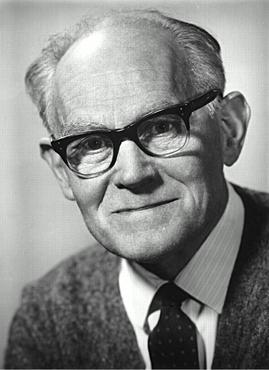
Did you have good teachers at school?
Where did you go to school?
But you were born in England?
I was born on 8th August, 1931 in Colchester in Essex—it’s an old Roman town, possibly the oldest town in England. My father took on a project called the Colchester Survey, which had to do with trying to decide whether environmental, or inherited qualities were more important in mental disease. The conclusion he came to was that the problem was much more complicated than anybody had thought before, which is also probably the right answer.
This was before going to Canada?
And when did you return to England?
Where did you go to university?
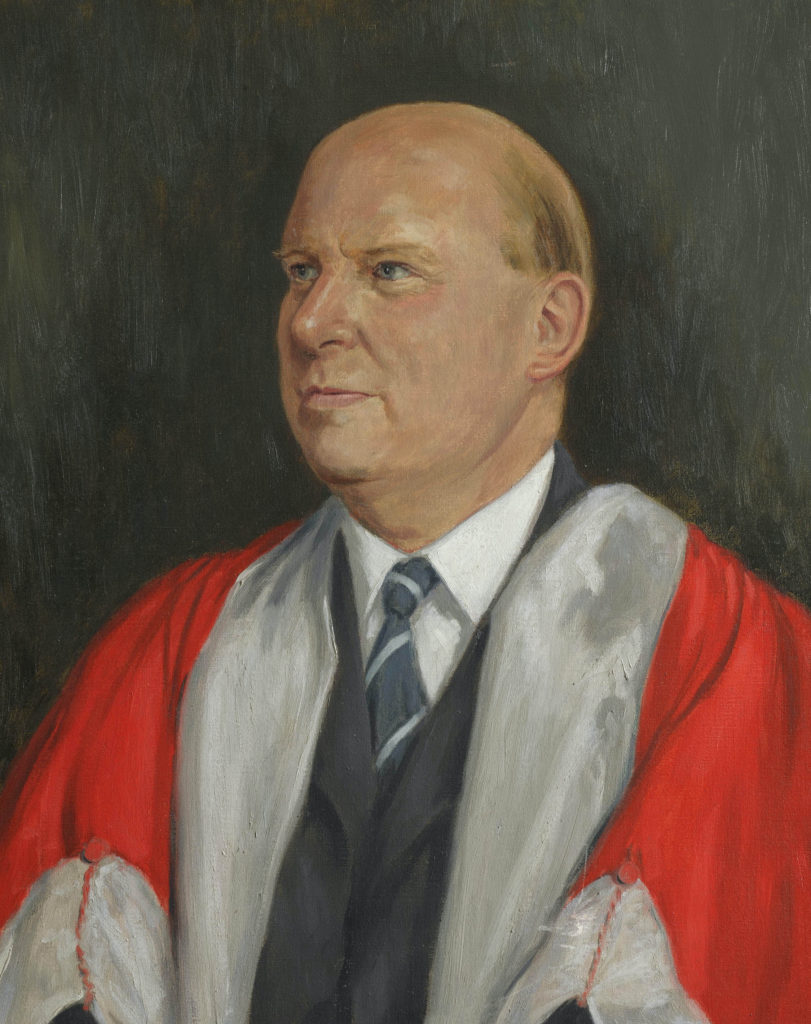
A contemporary who was also starting at the same time was Michael Atiyah, who later won the Fields Medal, became President of the Royal Society, Master of Trinity College at Cambridge, and was also the very first director of the Isaac Newton Institute. When you first become a research student you’ve no idea who the other people with you are. It took me a while to realise that there was something special about him. So, it was a bit intimidating, I remember, at the beginning.
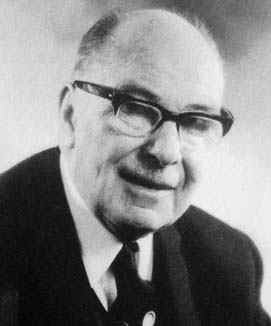
So, was he one of the most influential people you came across?
I remember going to three courses, none of which had anything to do with the research I was supposed to be doing. One was a course by Hermann Bondi on general relativity which was fascinating; Bondi had a wonderful lecturing style which made the subject come alive. Another was a course by Paul Dirac on Quantum Mechanics, which was beautiful in a completely different way; it was just such a perfect collection of lectures, and I really found them extremely inspiring. And the third course, which later on became very influential although at the time I didn’t know it was going to, was a course on mathematical logic given by Stourton W.P.\,Steen. I learnt about Turing machines and about Gödel’s Theorem, and I think I formulated during that time the view I still hold—that there is something in mental phenomena, something in our understanding of mathematics in particular, which you cannot encapsulate by any kind of computation. That view has stuck with me since that period.
You’ve worked in many areas, but let me start with your 1960s work in cosmology. With Stephen Hawking you discovered the singularity theorems that won you both the prestigious Wolf prize. What are these theorems about, and what do they say about space-time?
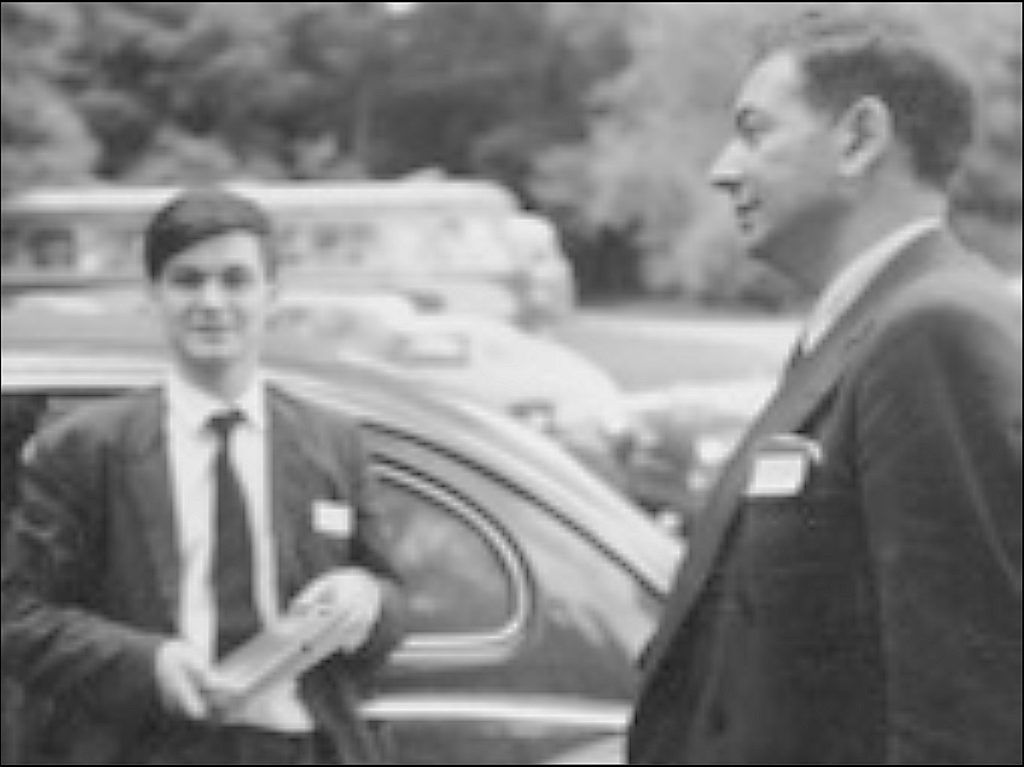
However, what Chandra showed is that gravity will overcome this force if the star is too massive, and then its electron degeneracy pressure cannot hold it apart. This problem occurs again in what’s called neutron degeneracy pressure, which is again the exclusion principle but now applied to neutrons. What happens is that the electrons get pushed into the protons and you have a star made of neutrons. Those neutrons hold themselves apart by not being able to be in the same state. But again, the Chandrasekar argument comes to bear on the neutron stars and you find that they also have a maximum mass which is believed to be not much more than that of a white dwarf. So, anything with, say, twice the mass of the sun would seem to have no resting place and would go on collapsing, unless it could throw off some of its material. But it seems unlikely that it would throw off enough material under all circumstances, especially if it started with a mass of, say, ten times the mass of the sun.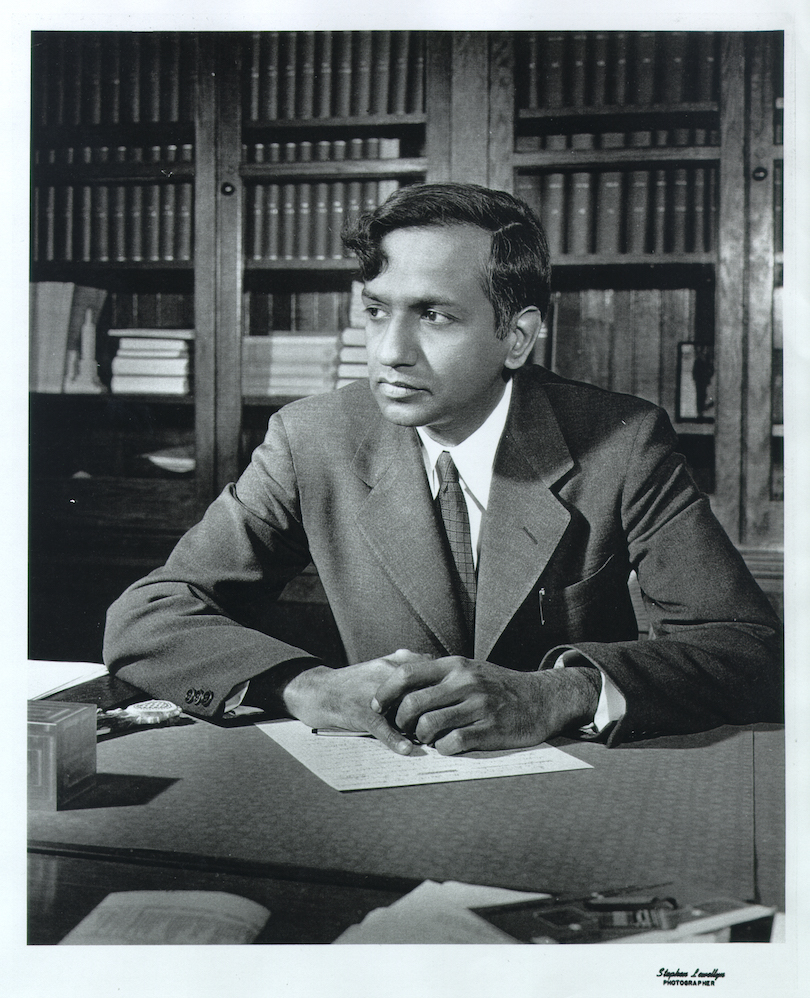
So, what happens to it? Round about 1939, Robert Oppenheimer and various students of his—in particular, Hartland Snyder—produced a model of the collapse of a body. As an idealisation, they considered a body made of pressure-less material, which was assumed to be exactly spherically symmetrical—and they showed that it will collapse down, to produce what we now call a black hole.
A black hole is basically what happens when a body is concentrated to such a small size for such a large mass that the escape velocity is either the velocity of light, or even exceeds the velocity of light—the escape velocity being the minimum speed at which an object thrown from the surface of the body escapes to infinity, and doesn’t ever fall back again. It’s about 25,000 miles an hour for an object on the surface of the earth. But if you concentrate the density of the earth so much, or take a larger body with a mass of, say, twice the mass of the sun and concentrate it down so that it is now just a few miles across, the escape velocity will then reach the speed of light. And then it becomes a black hole, if the escape velocity exceeds the velocity of light, so that nothing can escape, not even light.
This is exactly what happened in the model that Oppenheimer and Snyder put forward in 1939. But it didn’t catch on. Nobody paid any attention to it, least of all Einstein, as far as one knows. I think the view of many people was that if you remove the assumption of spherical symmetry then the exact model that Oppenheimer and Snyder had suggested would not be appropriate, and who knows what would happen? Maybe it would not concentrate into a tiny thing in the centre, but would just swirl around in some very complicated motion and come spewing out again—I think this was the kind of view some people had. And you begin to wonder whether assuming that there’s no pressure was even a fundamentally correct assumption to start with, because matter does experience pressure when it gets concentrated.
This was revived in the early 1960s when the first quasars were discovered. These extremely bright shining objects seemed to be so tiny, yet were so massive that one would have to worry about whether an object had actually reached the kind of extreme density limits that I’ve just been talking about, where you wouldn’t see it if it was really inside what’s called the event horizon, and where the escape velocity exceeded the velocity of light; but if you got close to it, then very violent processes could be seen taking place in its vicinity, which could also consequently produce extraordinarily bright objects. When the first quasar was observed, people began to worry again about whether what we now call black holes might not really be there out in the universe.
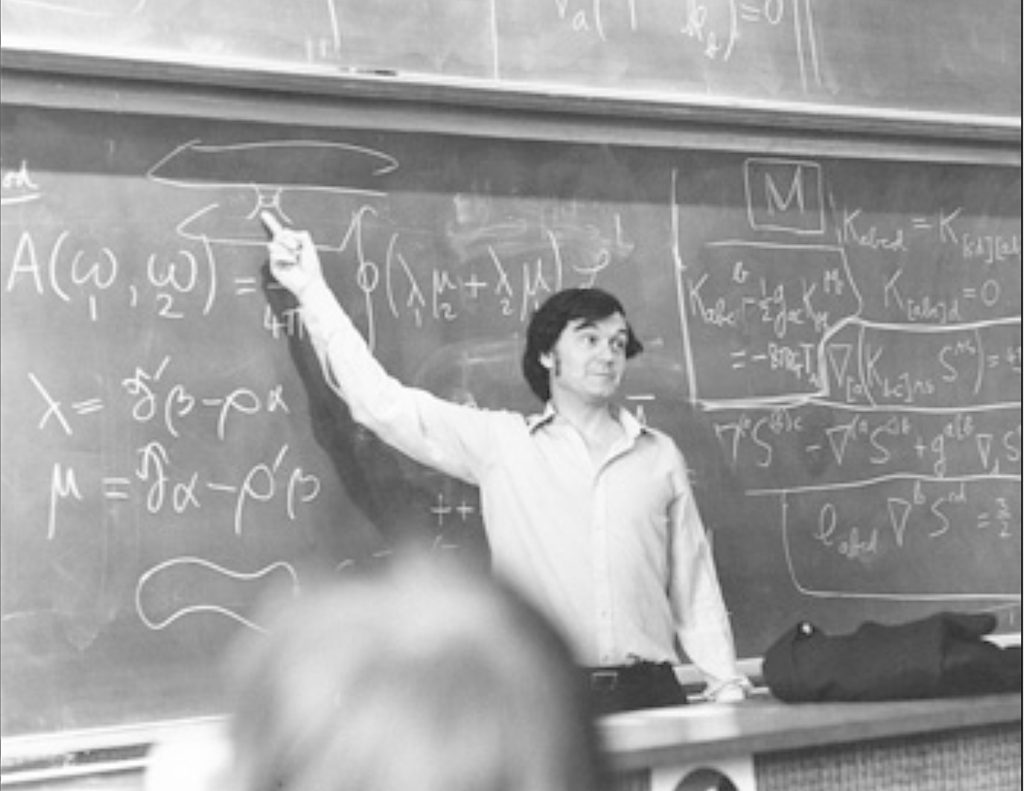
Can you test this theory in our universe?
Now there is a big assumption here to which we still don’t know the answer. It’s called Cosmic Censorship, a term I introduced to emphasise the nature of this hidden presumption, and one that is often tacitly made. Cosmic censorship asserts that the so-called `naked singularities’ do not occur. We know from the singularity theorems that singularities of some kind do occur, at least under appropriate initial conditions that are not unreasonable—but we don’t know if those singularities are necessarily hidden from external view. Are they clothed by what we call a horizon, so one can’t actually see them? With a black hole you have this horizon which shields that singularity from being viewed from the outside. Now it’s conceivable that you could have these naked singularities, but they’re normally considered to be more outrageous than black holes. The general consensus seems to be that these don’t happen, and this tends to be my view also. If you assume that they don’t occur, then you must get black holes. So, it’s a theoretical conclusion that if you have a collapse of a body which is beyond a certain size, then you get black holes.
there is something in mental phenomena, something in our understanding of mathematics, which you cannot encapsulate by any kind of computation.
Now one type of system that astronomers have observed is where there is a double star system, only one member of which is visible. The invisible component is taken to be a black hole—Cygnus X-1 was the first convincing example. It’s an X-ray source, and what is seen is a blue supergiant star which is in orbit about something; the `something’ is invisible through a telescope, but seems to be a source of X-rays. Now the X-rays would come about if material is dragged into a tiny region, and gets heated in the process of being dragged in; the material probably forms a disc, which is also the view people have. The material gets dragged off the companion star, the blue supergiant star, and it spirals into the hole, in the standard picture. It gets hotter and hotter until it reaches X-ray temperatures, and eventually becomes a source of X-rays; this is also what’s observed.
Now this doesn’t tell you that this object is actually a black hole, but the dynamics of the system are such that the invisible component has to be much too massive to be either a white dwarf or a neutron star, because of the Chandrasekar argument, and so on. So, the evidence is indirect: what one knows is that there is a tiny highly concentrated object which seems to be dragging material into it, and from the neighbourhood of which one sees X-rays emanating. Also, gamma ray sources seem to be black hole systems, and there may now be many other examples, other double star systems, or black holes in galactic centres. Indeed, there is convincing evidence for a very concentrated dark object at the centre of our own galaxy, of the order of something like a million solar masses.
It seems to be a standard phenomenon that galaxies may have these highly concentrated objects which we believe to be black holes in their centres. Some galaxies may have large ones, and quasars are now believed to be galaxies which have at their centres objects that are much brighter than the entire galaxy—so all you see is this central region which is extraordinarily bright. It’s bright because it has dragged material into it, and it gets extraordinarily hot and spews things out in certain directions at nearly the speed of light. You see examples of things where jets emerge out of centres of galaxies, and things like that. But all this evidence is still indirect. It’s not that one knows for sure that black holes are really out there, it’s just that the theory tells us that there ought to be black holes there, and the theory fits in very well with the observations. But most observations do not directly say that these objects are indeed black holes, although there’s impressive recent evidence of material being swallowed by one without a trace. There’s also another potential possibility of the direct observation of a black hole: when I say `direct’, it’s more because the theory of black holes is so well developed that one knows very closely what the relevant geometry should be. There’s a geometry known as a Kerr geometry, which seems to be the unique endpoint of a collapsed object forming a black hole, and this geometry has very interesting specific properties. Some of these could be tested to see whether the concentrated objects that we know are out there, really do conform with the Kerr geometry. That would add much more direct evidence for black holes, but it’s something for the future.
What would be the most striking physical implications of the singularities here?
Now what we believe is that singularities are regions where quantum theory and general relativity come together, where things are both small and massive at the same time. `Small’ is where quantum effects become important, and `massive’ is where general relativity becomes important. So, when you get these two things happening together, which is what happens in singularities, then the effects of both general relativity and quantum mechanics must be considered together.
Now this applies both in the Big Bang, and in the singularities in black holes, and it would also apply if the whole universe were to ever collapse—although that would just be a conglomeration of all the black holes, into one bigger black hole. There’s one thing I find particularly interesting, however, which is the stark contrast between the Big Bang and the singularities in black holes. It’s a bit ironic, because in the earlier stages of the black hole singularity discussions, their reasonableness was that we already know there’s a singularity in the Big Bang. It was argued that the singularities in black holes are just the same as the Big Bang, but time is going the other way—so if you have one, you should have the other. This was quite a plausible kind of argument, but when we look at these things in detail, we see that the structures are completely different: the structure that the Big Bang had was very smooth and uniform, whereas the structure we expect to find in singularities is very complicated and chaotic—at a completely different end of the spectrum.
In fact, this is all tied up in a deep way with the second law of thermodynamics. This law tells us that there is a time asymmetry in the way things actually behave. This is normally traced far back in time to some very ordered structure in the very early stages of the universe—and the further you trace it back, the more you find that this ordered structure is indeed the Big Bang.
So, what is the nature of that ordered structure in the Big Bang, and what is its cause? Well, in relation to what I was just saying, it is quantum gravity. We believe that this is where quantum theory and gravitational theory come together. And what this tells us—and I’ve been saying this for quite a few years but few people seem to pick up on this completely obvious point—is that the singularity structure, which is where we see general relativity and quantum mechanics coming together most blatantly, is time-asymmetrical. So, it tells me that the laws involved in quantum gravity, combining quantum theory with general relativity, must be time-asymmetrical, whereas the laws we normally see in physics are time-symmetrical.
It also tells us, it seems to me, that the laws of quantum gravity are not just concerned with applying quantum mechanics to general relativity—when I say `just’, it’s a gross understatement because nobody knows how to do that, but I think it must be a union between these two theories, giving a new theory of a different character. It’s not just quantum mechanics: quantum mechanics itself will have to change its structure and it will have to involve an asymmetry in time, but I have reason to believe that this is all tied in with the measurement problem—the collapse of the wave function, the curious features that quantum theory has which makes it in many respects a totally unsatisfying theory from the point of view of a physical picture, or as a philosophically satisfying view of the world. Quantum mechanics is very peculiar, because it involves incompatible procedures. My own view is that this is something that we will only understand when we’ve brought Einstein’s general relativity in with quantum mechanics, and combined them both into a single theory.
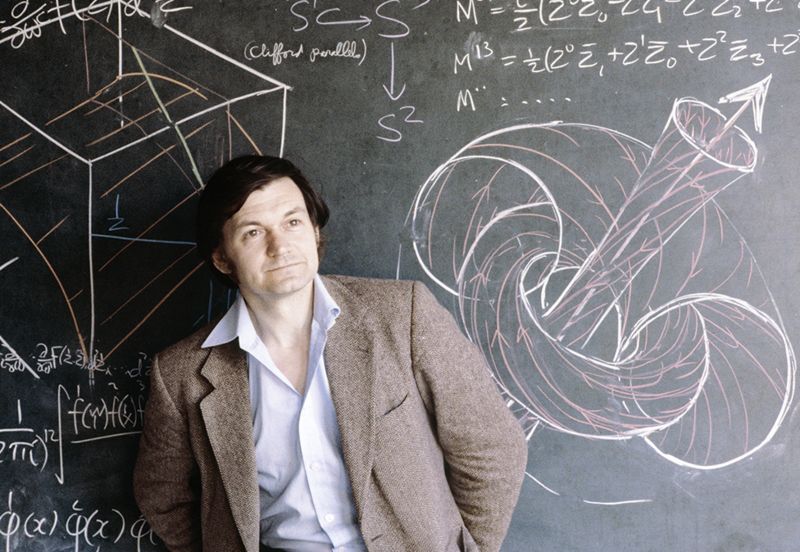
So, my view on quantum gravity is quite different from that of most people. What most people seem to say is “Oh, you’ve got to try and quantise general relativity, and quantise gravitation theory, and quantise space-time”: to `quantise’ means to take the rules of quantum mechanics as they are, and try to apply them to some classical theory, but I prefer not to use that word. I say that the theory we seek also involves a change in the very structure of quantum mechanics. It’s not simply quantising something; it’s bringing in a new theory that has standard quantum theory as one limit. It also has standard general relativity as another limit, but it would be a theory that is different in character from both those theories.
Let me come to another aspect of your work. One of your greatest inventions is twistor theory, which you introduced around 1967. What is ‘Twistor Theory’?
Let me mention two of them. One was non-locality, because one knows about phenomena in which what happens at one end of a room seems to depend on what happens at the other end. These experiments were performed in the early ’80s by Alain Aspect in Paris—all right, those experiments hadn’t been performed when I introduced twistor theory, but the original ideas were there already—I mean the Einstein-Podolsky-Rosen phenomena, which tell you that quantum mechanics says that you have these `entanglements’—things at one end of the world seem to be entangled with things at the other end. Now that’s only a vague motivation: it’s not really something that twistor theory even now has a great deal to say about, but it does say that somehow non-locality is important in our descriptions, and twistor theory (as it has developed) certainly has features of non-locality, over and above those I was aware of when I started thinking about these ideas.
Originally, rather than having points in space-time as the fundamental objects, I thought more in terms of entire light rays as being fundamental. The reason for thinking about light rays actually came from something quite different, which I regard as perhaps the most important motivation underlying twistor theory. In the union between quantum mechanics and general relativity, I feel strongly that complex numbers and complex analytic structures are fundamental to the way that the physical world behaves. I suppose that part of my reason for this goes way back to my own mathematical training. When I first learnt about complex analysis at university in London, I was totally `gob-smacked’—it just seemed to me an incredible subject; some of the simplest ideas in complex analysis, such as, that if a function is smooth then it’s analytic, are properties which I always thought were totally amazing.
What are twistors, and how are they more fundamental than a point in space-time?
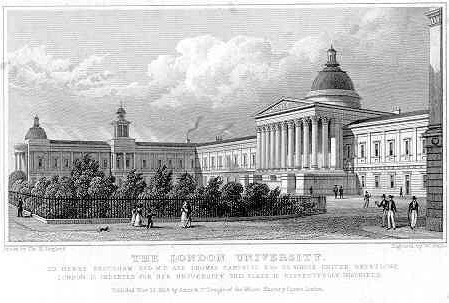
Now the thing that struck me from quite early on—it’s one of the earliest things I did in relativity—is that if you look out at the sky, you see a sphere; but if you consider two observers looking out at the same sky, one of whom is moving with a high speed relative to the other, then they see a slightly transformed sky relative to each other, and the transformation of that sky preserves circles, and takes angles to equal angles. Now those people who know about complex analysis know that this is the way you look at the complex numbers: you have infinity as well, and they make a sphere—the Riemann sphere—and the transformations that send that sphere to itself, the complex analytic transformations, are precisely those that send circles to circles, and preserve angles too. I was completely struck by this phenomenon, as it seems to me that what you’re doing when you look at the sky is that you’re seeing the Riemann sphere—they are these complex numbers just out there in the sky, and it seemed to me that that was a kind of an appealing mathematical connection. It seemed to me to be such a beautiful fact, and in a sense, the transformations of relativity are all contained in that fact. Surely that should mean something. We already know that complex numbers are fundamental to quantum theory, and here we see complex numbers being fundamental to relativity too, when we look at it this way.
I’d say that the whole programme of representing Einstein’s theory in terms of twistors is what I’m proudest of.
My view was to say “all right, don’t think of the points you see when you look at the sky; what you are doing is seeing light rays. You and a star in the distance are both connected by a light ray, and the family of things that you see, as you look at the sky, is the family of light rays through your eye at this moment.” So, the thing with the complex structure is light ray space, telling you that maybe you can see this link between space-time structure and complex numbers if you concentrate not on points, but on light rays instead.
So that was really the origin of twistor theory—well, that’s cheating slightly, but I suppose one cheats when one gets used to a certain idea, because although these phenomena were known to me and I realised their importance, it was something else that really steered me in the direction of twistor theory. It’s a bit technical, but had to do with complex numbers—all right, you see them in the sky, but you also see them in all sorts of other places—in solutions of Einstein’s equations, and so on—they started to come up when people looked at specific solutions of Einstein’s equations. It turned out very often that you could express things very nicely if you used complex numbers, and it suggested to me that somehow—I had this image of an iceberg, you see—what you see is a little bit at the top and there’s the rest of it down underneath, which is invisible. It’s really a huge area where these complex numbers at the tip poke up through the water, while the rest of it is underneath.
So, these solutions, where one sees the complex numbers, seemed just the tip of an iceberg, and they were really underneath governing the way that the first-hand structure works. It was a search to try and find what that complex structure was, and it wasn’t until certain things that are not appropriate to describe here were clarified, that things became clear. These things are related to solutions of Maxwell’s equations and Einstein’s equations which show you that the space of light rays, although not quite a complex space because it’s got the wrong number of dimensions, but looking at its structure, can be seen as being part of another structure, a slightly extended one with six dimensions; and this now effectively produces a complex objective space, which is also a complex projective 3-space.
Now with hindsight I can describe these things more satisfactorily. Let me put it like this. When you think of a light ray, that is a photon idealised in a specific way, and where you are just thinking of it as a path through space-time. But you have to bear in mind that massless particles (photons, in particular) also have spin (they spin about their direction of motion), and if you introduce the spin, they also have energy. The spin is a discrete parameter. It’s either left-handed or right-handed, but when the particle has spin, introducing the energy (a continuous parameter) imparts one more degree of freedom. So instead of having just five dimensions of light rays, you find a six-dimensional space that is naturally the complex 3-space. So, you’ve got the whole thing, the right-handed ones, the light rays and the left-handed ones, and they all fit together to form a space that’s called projective twistor space.
And it seemed to me that once you take this space as being more fundamental than space-time (the main reason being that it’s complex), it ties in with other things that I’ve been interested in for years—the use of spinors and how you treat general relativity, things which I’d learnt in Bondi’s and Dirac’s lectures. This notion of spinors, as a way of treating general relativity, was something I found to be powerful, but it didn’t quite do what I wanted, which was to get rid of the points. That was what twistor theory achieved, and it’s still going on.
So how do twistors actually relate to these singularity theorems? Do they have anything to say about those theorems?

So, my view is that the major problem in twistor theory is to see how to incorporate Einstein’s theory into the twistor framework, and it’s still not complete. What we seem to see is that in the process of incorporating Einstein’s theory into twistors, we also have to incorporate ideas of quantum mechanics. So, my hope is that in bringing classical general relativity into the scope of twistor theory, one will also see how quantum theory must be made to combine with general relativity, and in that combination, one will see how to deal with singularities, because that is the place where the combination of the two theories comes in. Also, there must be a time asymmetry in the way it comes together, and that will explain the difference between the past and the future singularities. But all these things are hopes—they’re not something I can do now.
Twistor theory has been tremendously successful in applications within mathematics, but has it been helpful in understanding the nature of the physical world?
You mentioned string theory. Are there connections between twistor theory and string theory?
These new theories involving p-branes seem to be more suitable, somehow?
Now what we had in mind, which was much more in line with twistor theory, is to look at a complex three-dimensional version of this, which we called pretzel twistor spaces; they’re complex three-dimensional spaces, so they are six real-dimensional, and if you can think of them as branes in some sense, then they are 5-branes. Now is there a connection between those 5-branes and the 5-branes of string theory? I just don’t know, and I haven’t explored it. I didn’t mention it to Witten when I talked to him, but there might be something to explore here. That’s just off the top of my head, I don’t know, but yes, it might be that there’s a connection there.
In the early 1970s you discovered two chickens that can tile the plane in a way that must be non-periodic. How did you find these non-periodic—or perhaps, I should say aperiodic—tilings?
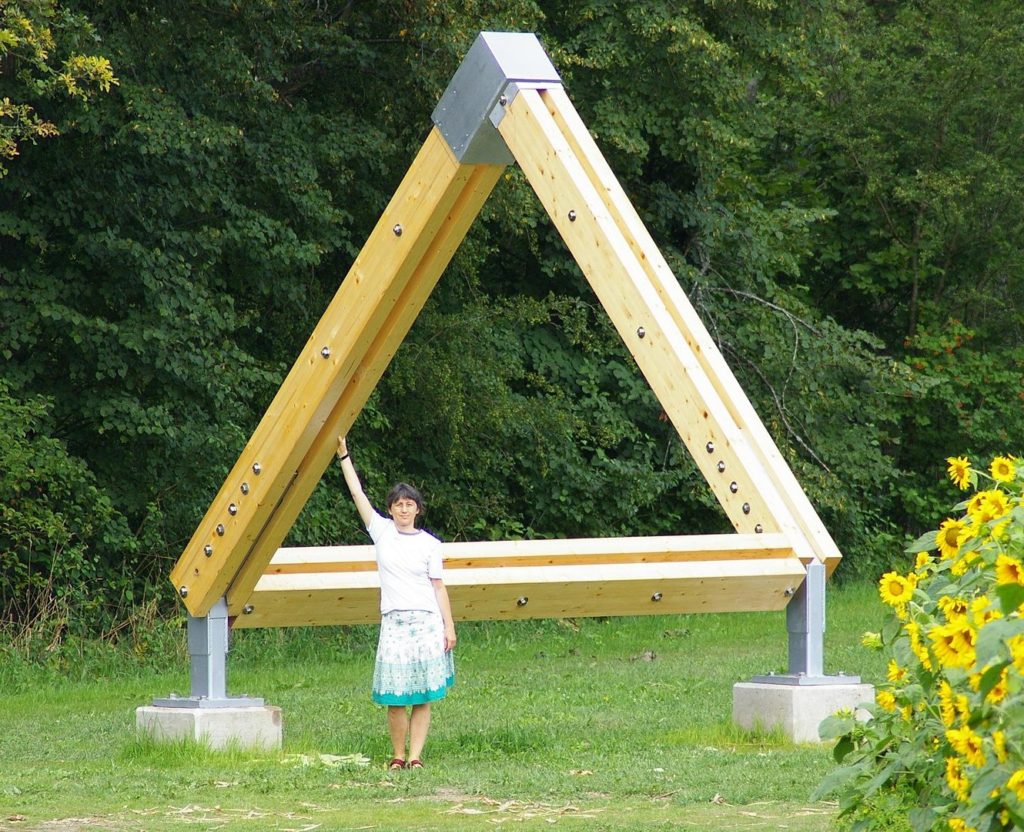
What was the name of these tiles? The magic something?
I met Escher once, and left him a copy of a puzzle I’d made which consisted of wooden pieces which he had to try and assemble. Well, he managed to do this all right, and somewhat later when I explained the basis on which it was constructed, he produced a picture called Ghosts—as far as I’m aware it was his last picture, when he was quite ill—and it’s based on this tile I’d shown him—twelve different orientations of this shape.
But that was just a sideline, an amusement really, and the way the tilings came about was in two stages. I’m sure I owe a debt to Johannes Kepler, although I didn’t realise it at the time, because my father owned a book showing the picture that Kepler designed which had a number of different tilings that he played with. Some of these were of pentagons, and these tilings with pentagons are very close to the tiling shapes I produced later.
Now I was aware of these things because I’d seen them, but they were not what I thought of when I was producing my own. They just coloured my way of thinking, which must be rather similar to what happened to Dan Shechtman when he discovered quasicrystals. He hadn’t thought about my tilings, but when I spoke to him later, he said he was aware of them. I suspect that it’s the sort of thing that puts you in a `kind of’ frame of mind, so that when you see something, you’re more receptive to it than you would have been otherwise. So yes, I’m sure it’s true of me with Kepler that I was more receptive to his kind of design.
These three-dimensional forms of your tiles have appeared in recent years, as Quasicrystals. Did you ever anticipate such applications of your non-periodic tilings?
Now I think, although people now understand them better, the situation is much the same. I still don’t think we know how they’re produced spontaneously, and there are different theories about how they might come about—maybe there was something a little bit non-local, something basically quantum-mechanical, about those assemblies which I came to think is probably true, but it’s not an area that people are agreed about—in fact, it’s not totally agreed that quasicrystals are this kind of pattern, although I think it’s getting pretty well accepted now.
There was no line – you couldn’t say what was recreational and what was professional work.
I was first shown the physical objects, the diffraction patterns, by Paul Steinhardt at a conference in Jerusalem to do with cosmology. I was talking about general relativity and energy and he was talking about inflationary cosmology, and he came up to me and said, “Look, I want to talk to you about something that has nothing to do with this conference”. He showed me these diffraction pictures that he’d produced, and it was quite startling but very gratifying—in fact, curiously enough, I wasn’t completely surprised. I suppose I felt that it must be right and nature is doing it somehow. Nature seems to have a way of achieving things in ways which may seem miraculous; this was just another example of that.
Have any other examples of your work in recreational mathematics found reflections in natural phenomena, or in physics?
In 1989 you published a best-selling book, The Emperor’s New Mind,5 where you’re concerned with computers and artificial intelligence, the mind, the laws of physics, and many other things. What is the central question you address in this book?
So, I was quite prepared to believe that there was something outside computation. I’ve been interested in mathematical logic for a long time, and I’d known for a long time that there are things of a mathematical nature that are outside computation; that didn’t frighten me—it just seemed to me `all right, why not?’ Then I saw a television programme where Marvin Minsky, Edward Fredkin and others were making outrageous statements about how computers were going to exceed everything we could do. What they were saying was logical if we were indeed computers—but since I didn’t believe that, it seemed to me that this was something they’d completely missed—and not only had they missed it, I’d myself never seen it anywhere else. So, as I’d previously considered writing a popular or semi-popular book on physics—something I thought I’d do at some stage in life, but perhaps not until I had retired—this provided an opportunity: `All right, let’s explain things about physics and what the world is like, as far as we know, but with a different focus—let’s explore the laws of physics to see whether there’s scope for something of a non-computational character’. I’d never seen anybody put this forward as a serious viewpoint. Since it seemed to me that it needed to be put forward, that’s what I did.
So, this was an attack on artificial intelligence; but you also proposed that since quantum mechanics was incomplete, the understanding of physical laws had to precede any understanding of the functioning of the mind.
I think I’d already thought that this had to do when gravitational phenomena started to become entangled with quantum effects—that’s when the changes start to appear, and there are good reasons for believing that. So that is what I believed in at the time, and still believe; but when writing The Emperor’s New Mind, I didn’t really have any clear idea on where in brain function, quantum effects could start to become important and have an influence on large-scale effects, and where these new physical processes that should be non-computable, could come in.
So, I started writing the book, expecting that by the time I’d finished I’d have some clearer ideas on these. This happened to some degree—I was very ignorant about lots of things that had to do with the brain when I started, and I had to study hard to write the chapters specifically on them, and in particular the idea of `brain plasticity’—that the connections between neurons can change, and that these changes can take place quickly—it seemed to me that this was very important, and that the new physics comes in to regulate these changes.
So, has this given you any clue as to what changes are needed in quantum mechanics?
You’re now referring to your second book Shadows of the Mind.6 Did you pursue the same problems in this book?
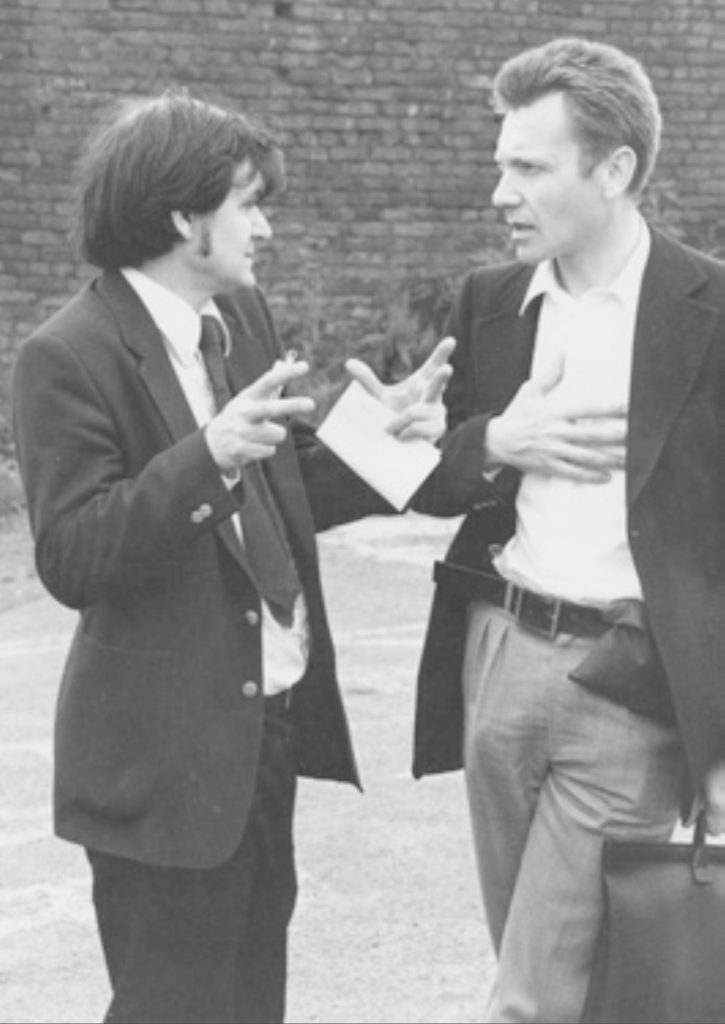
One of them was that I received a letter from Stuart Hameroff telling me about the cytoskeleton whose structures inside cells I was totally ignorant of. But most people who work in artificial intelligence didn’t seem to know about them either; Marvin Minsky didn’t, as he told me afterwards. But it seemed to me that here was a completely new area for which it was much more plausible that quantum effects could be important. They are much smaller structures than neurons and are much more tightly organised structures. The most relevant of these were microtubules, where one has a much more credible arena for coherent quantum phenomena to take place. It is still hard to see how this takes place, because it is difficult to maintain quantum coherence on the large scale that one needs in order for these ideas to work. One needs to go beyond what can be done in any physics lab today, and there is no physical experiment performed today that can achieve the kind of quantum coherence at the level that I would need in order for the kind of phenomena to take place, and that I suspect are taking place all the time in our brains. So, nature has been a lot cleverer than physics has been able to get so far, but why not? It seems to me quite plausible that this is the case. The cytoskeleton, and in particular microtubules, seem to me to be structures where quantum coherence is much more plausible. So, I changed the nature of this book. I wanted to put in microtubules and the cytoskeleton, and so I needed to learn a little bit more about it and to express why I think that’s important in brain action.
The other thing which happened was that I somewhat shifted my viewpoint on quantum state-reduction, in relation to gravity. The viewpoint I’d held for quite a long time, and which is expressed in The Emperor’s New Mind, is more or less that, if you have too big a discrepancy between two states, then they don’t superpose and the state reduces. This discrepancy is to be measured in terms of space-time geometry; I called it the one graviton criterion. It is to do with how many gravitons come into this difference between the two states.
Now in work that I did subsequently, and also in work that had been done by others (particularly Lajos Diósi, a Hungarian, and Giancarlo Ghirardi in Italy) who had developed different ideas in connection with quantum state-reduction, it seemed to me that I needed to modify the view that I had before. I think it’s quite a significant modification. Basically, when you have two states that are significantly different from each other, then their superposition becomes unstable, and there is a calculable time scale involved in how long it takes for the superposition to `decay’ to one state or the other. The details are probably a bit too technical for here, but there indeed is a finite time scale, rather than an instantaneous reduction, and this time scale produces figures that are much more plausible—also, it is easier to use and it may be much more relevant to brain action.
Consciousness seems to be such a different phenomenon from the other things we see in the physical world…
One can see how to use it, and these ideas were developed in collaboration with Stuart Hameroff. We produced a number of suggestions about how this idea could be carried forward, but again we found a great deal of opposition. A lot of these ideas are clearly speculative, but I don’t think it is that speculative that something like this is going on. It seems to me it has got to be. Consciousness seems to be such a different phenomenon from the other things we see in the physical world that it’s got to be something very special, in physical organisation. I can’t see that it’s really just the same old physics put together in more complicated systems. It’s got to be something of quite a different character from other things that are important in the way the world operates. This new physics would be only occasionally employed in a useful way, and you have to have a very careful organisation that takes advantage of whatever is going on in state-reduction, and channelise it in a direction which makes us operate. But it is very rarely actually taken advantage of in physical systems, where most things don’t use this phenomenon in any useful way at all.
In these books you reveal yourself to be a philosopher. How have you come to terms with the Great Mystery?
People say, and physicists often say: we nearly have the solution to the grand theory of the universe which is just around the corner, the theory of everything. I simply just don’t believe that. I think there are major areas of which we have almost no understanding at all, and it’s quite curious that one can have a view which seems to encompass (at least in principle) most of the things that you see around you, and of why they behave this way or that way.
One of the major things that isn’t explained is simply ignored and just swept under the carpet by physicists generally, which is quantum state-reduction. They say: quantum theory is a beautiful theory; it works perfectly well and describes how tiny particles behave. But, to put it bluntly, it gives you the wrong answer. What the theory tells us is that, for example, if you had Schrödinger’s famous cat, the cat could very easily be put into a state of being alive and dead simultaneously. That’s simply wrong; it doesn’t do that. So, what is it? I mean, there is something big missing from our view of the world, it’s huge and it’s not just a tiny phenomenon which we haven’t quite got hold of, because we’ve got to get even that last decimal place right, and the coupling constant or something: it’s a huge aspect of the way the world behaves which we simply do not understand, and understanding it is, in my view, one small step towards understanding what mentality is. I think it must be a part of it, but it is still not going to answer the question of mentality. We may well know what state-reduction is (and I expect that we will eventually know, if only we don’t destroy ourselves first); then that theory will have as part of its nature some completely different way of looking at the world from the way we have now. We’ve already seen that happen in Einstein’s general relativity, because before that we had Newton’s theory which told us how bodies attracted each other with forces and moved around and so on. It’s beautifully accurate: Newton’s theory is incredibly precise. It tells you how the planets move around in their orbits to almost complete precision—not quite, but almost. You might think it only requires a little tiny modification to make it completely right, but that’s not what happened. Einstein produced a theory that is so completely different. Its structure is utterly different from that of Newton’s theory, but it gives almost exactly the same answers. The philosophical framework of that theory is quite different. The very nature of space is warped, and that changes our whole outlook. Now what I am saying is that when we see how quantum theory is to be changed to accommodate state-reduction as a phenomenon, with the measurement process as a phenomenon, we shall have to come to terms with a completely different way of looking at what matter is, and what the world is like.
Are you saying that this is a step that will help us to address questions that are typically addressed, by some people at least, by religion?
We have touched on only a fraction of your work but what is the result, theorem or theory that you are most happy with?
How do you actually work? How do you select a problem? I’ve seen you many times in your lectures and seminars making pictures—do you visualise things that way?
Nature seems to have a way of achieving things in ways which may seem miraculous.
What are you working on right now?
You’ve mentioned a number of mathematicians and physicists, but who is your most admired mathematician or physicist?
What is your opinion about the direction in which research in mathematics and physics is going nowadays?
Communication is obviously beneficial, but the aspect you’re remarking on is actually a negative one.
It becomes a political thing as well.
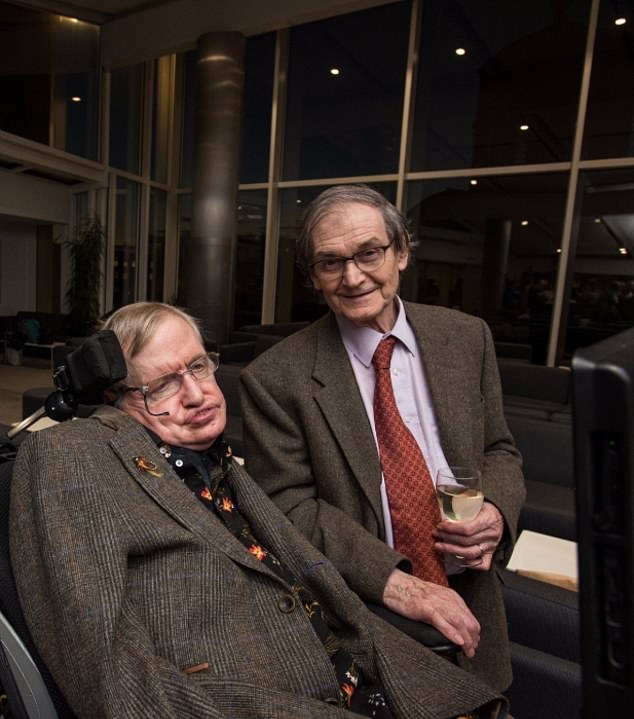
Are you questioning the way in which what’s important and what’s not are decided?
I remember reading in one of your papers that twistor theory was an esoteric subject from that point of view. Do you still maintain this view?
Tiling problems have always been a doodling side interest of mine
That’s right. But what recent development in science at large has made the greatest impact on you?
What aspects do you find most interesting?

Quasicrystals are remarkable. High temperature superconductors are amazing, and so are developments in molecular biology. Some of the things that people are now learning about cells and about cytoskeletons and microtubules—I find them fantastic. Partly this is because I didn’t know what was going on in biology, and having got slightly involved in this subject, I see some remarkable things.
I came across Erwin Schrödinger’s book What is life, for which you wrote a preface.
Can you tell us something about this?
I eventually realised that Bach is really my favourite by quite a long way
What books are you reading at the moment?
If the day had 36 hours, what would you like to do?
What about music? Do you have a favourite composer?
What do you consider the most profound scientific development of the last century?
It’s the perfection in Mozart that I find somewhat magical
Finally, what will keep you busy in the future?
Footnotes
- Oscar García-Prada: Interview with Sir Michael Atiyah, Newsletter of the European Mathematical Society, 102 (2016), 22–30. ↩
- Stephen Hawking and Roger Penrose, The nature of space and time, With a foreword by Michael Atiyah. The Isaac Newton Institute Series of Lectures. Princeton University Press, Princeton, NJ, 1996. x+141 pp. ISBN: 0-691-03791-4. ↩
- Here are two books on the topic jointly authored by Penrose: 1. Roger Penrose and Wolfgang Rindler, Spinors and space-time. Vol. 1. Two-spinor calculus and relativistic fields. Cambridge Monographs on Mathematical Physics. Cambridge University Press, Cambridge, 1987. x+458 pp. ISBN: 0-521-33707-0 83Cxx; and 2. Roger Penrose and Wolfgang Rindler, Spinors and space-time. Vol.2. Spinor and twistor methods in space-time geometry. Second edition. Cambridge Monographs on Mathematical Physics. Cambridge University Press, Cambridge, 1988. x+501 pp. ISBN: 0-521-34786-6 83Cxx. ↩
- Michael Atiyah, Maciej Dunajski and Lionel J. Mason, Twistor theory at fifty: from contour integrals to twistor strings, Proceedings of the Royal Society A. Vol 473, Issue 2206, October 2017.. ↩
- Roger Penrose, The Emperor’s New Mind: Concerning computers, minds, and the laws of physics. With a foreword by Martin Gardner. The Clarendon Press, Oxford University Press, New York, 1989. xiv+466 pp. ISBN: 0-19-851973-7. ↩
- Roger Penrose. Shadows of the mind: A search for the missing science of consciousness. Oxford University Press, Oxford, 1994. xvi+457 pp. ISBN: 0-19-853978-9. ↩
- Roger Penrose. Fashion, faith, and fantasy in the new physics of the universe. Princeton University Press. Princeton, NJ, 2016. xvi+501 pp. ISBN: 978-0-691-11979-3. ↩
- It is 1,200 kilometres, as of 2017. ↩
- Roger Penrose. The road to reality: A complete guide to the laws of the universe. Alfred A. Knopf, Inc., New York, 2005. xxviii+1099 pp. ISBN: 0-679-45443-8. ↩
